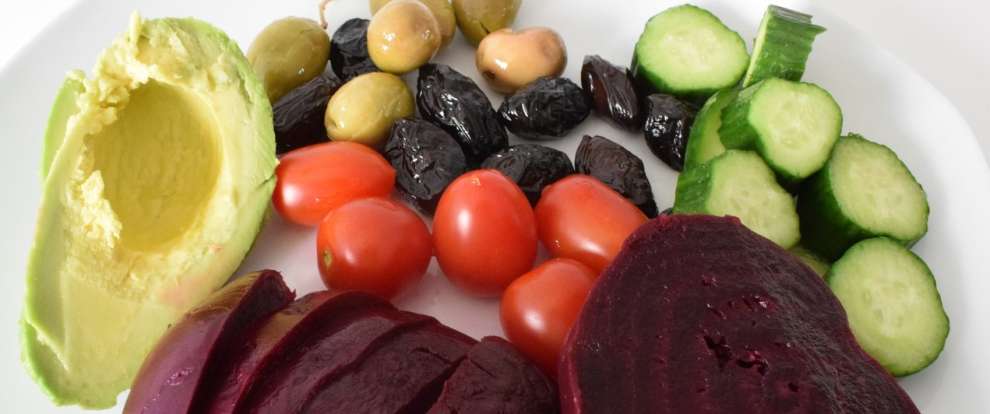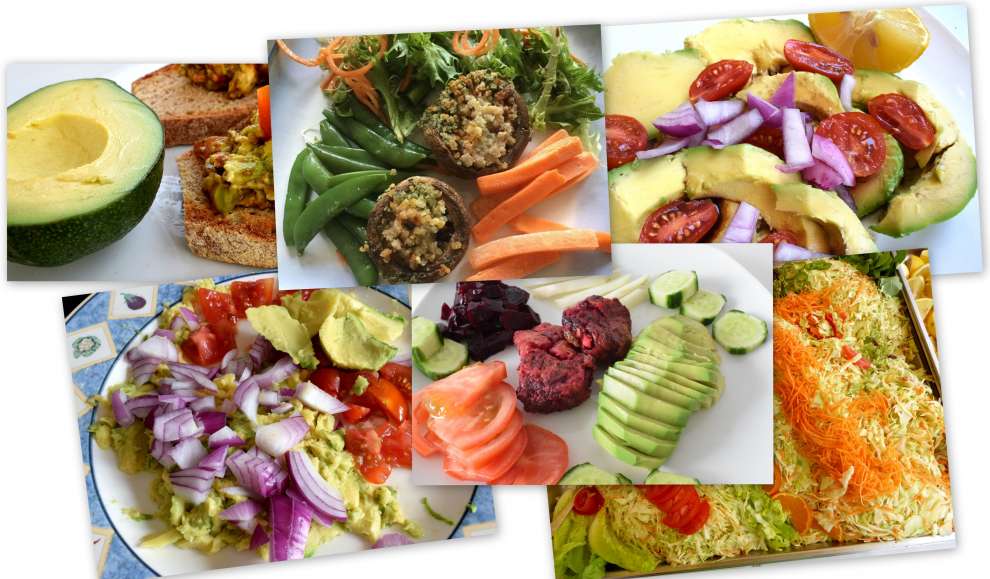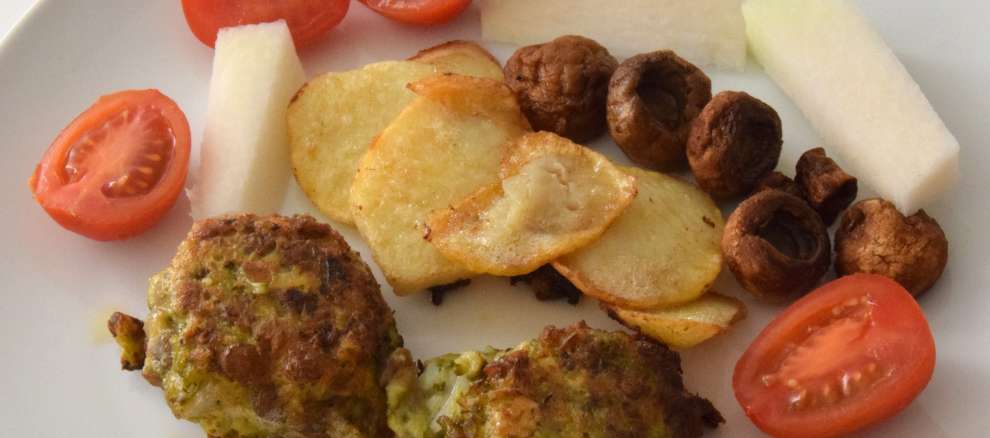How I lost ten kilos
Following the Greek Orthodox nativity and lenten fasts
I am fat! There are no two ways about it. Years of working at a desk and sitting behind the wheel of a car have taken their toll. It is a tiresome condition. It feels as if I have to carry a few sacks of potatoes with me everywhere I go.
Last year (2017) I stumbled on an eating pattern that led to unexpected weight loss. I had felt inspired, for the first time, to make a reasonable attempt at following the Greek Orthodox fasts for Easter and Christmas. These are for 40 days before Christmas and 50 days before Easter. These fasts are essentially vegan (excepting that shellfish and squid/octopus are permitted). This mainly vegan approach is coupled with abstinence from various other foods and drinks (e.g. wine) on certain days. The hardest from which to abstain, is oil. Many people ignore this totally. Some give up only olive oil. I have to say that I personally find it pointless to give up relatively healthy olive oil in favour of a less healthy oil such as sunflower oil. I aim at having “no oil” days three times a week during lent (more or less in line with the Nativity fast). To ignore oil restrictions altogether rather cuts down the challenge. Vegetables, so abundant in these lands, play such an important role in Greek cuisine that just about every Greek in the world knows how to prepare a whole panoply of vegan dishes.

"Just about every Greek in the world knows how to prepare a whole panoply of vegan dishes."
I like the concept of the spiritual exercise of these main fasting periods – more correctly termed in English as periods of abstinence. The Greek word “Nistia” makes no such distinction. It is the same word for a total fast (as practiced by the Jews on the day of Yom Kippur) and for abstinence from certain foods. I like the notion of balance that I discuss in an earlier article on feasting and fasting and that I describe as a kind of spiritual yin and yang.
The purpose of the “Nistia” is spiritual – to teach us to resist temptation in relatively easy matters and thereby learn to resist when more critical occasions arise. However, my experience is that there can be an additional physical benefit in the form of weight loss.
At the beginning of 2017 I weighed a little over 105 kilos. Now, half way through lent in 2018, I weigh a little under 95 kilos. Most of the weight loss has been achieved during the Nativity and Lenten fasting periods. However, having discovered by chance a nutritional weight loss pattern that seems to work for me, I continue with that approach to eating, albeit less rigorously, during the rest of the year and lose weight more slowly. I really should lose another ten kilos at least, but I suspect that this will be a harder and longer exercise.
If one wants to take advantage of the Orthodox fasts to kick-start a weight loss programme, it is no use replacing meat with lots of bread and pasta. One needs to consider carefully what one does eat and make sure that one is consuming an adequate amount of proteins. These can come from nuts, pulses and green vegetables such as broccoli.
Pulses generally play an important role in Greek cuisine and it will be typical for a Greek kitchen to be well stocked with fava beans, black-eyed beans, red kidney beans, lentils, chick peas (from which Houmous is made) and white beans which we call “Fasolia”. These come from Greek Green Beans which look slightly different to English Green Beans.
"Pulses generally play an important role in Greek cuisine"
During “Nistia” (and quite often at other times also, I start off my day with a mug of instant black coffee ("sketo" ie no sugar) and some mixed nuts. These are a wonderful gift from nature, providing a good quantity of proteins as well as other nutrients. They fill one up quite well, specially if one keeps a jar of them handy for grazing when one is feeling peckish. I like to keep bags of raw mixed nuts and also of roasted peanuts. I probably consume about 500 calories worth of nuts a day – roughly a third of my food intake.
It is the “no oil” days that are the hardest. Amazon sell a book that I wrote called “How to Make a Chicken go Further” which is all about eating delicious food without breaking the bank. I have to admit that on “No oil” days I often give up all attempt at gastronomy and simply concentrate on getting healthy nutrients into my body. But not always. Many delicious salads can be prepared without oil or mayonnaise. There is something joyful even in the pure taste of an unadulterated vegetable.

"There is something joyful even in the pure taste of an unadulterated vegetable"
At lunchtime I eat many raw vegetables. I often have raw grated carrot with raw, sliced, white cabbage and a drizzle of fresh lemon juice. I tend to buy a lot of fresh beetroots which I boil up and eat during the week as part of a salad or with just one or two other vegetables such as boiled potato and spring onion. Avocados are another staple food in my kitchen. Olives, both black and green, provide a nice alternative to biscuits for a quick nibble. I am always well stocked with olives. “Kοlοumbra” or “Kholrabi” is another vegetable that is useful to have around – very refreshing and crunchy and can be eaten raw. It is a funny-looking vegetable, almost unknown in the UK. It always makes me feel that it is something out of a Dr Who film set.
Salads can play an important part of the “Nistissimo” menu, Here, is a selection of alternative salads, some suitable for any day, some for “no oil” days.

"Salads can play an important part of the 'Nistissimo' menu"
On oil days my favourite “nistissima” dishes are:
- Vegetarian Gemista using, for the stuffing, caremalised finely chopped onion, chopped garlic, rice and chick peas.
- Fasolia Lathera which are often eaten with lamb or chicken, but which are very tasty as a vegan dish.
- Briam – the Greek version of Ratatouille.
The preparation of the above dishes is outlined in my Christmas article, "Feasting and Fasting, Christmas in Cyprus". Here are another 12 dishes to consider for “oil ok” days are:
- Grilled peppers and broccoli stewed in tomato sauce.
- The Indian Dish, Aloo Gobi which consists mainly of cauliflower and potato spiced with cumin seeds, chilli peppers or powder and turmeric.
- A vegetarian version of the Armenian dish, Adzem Pilafi, much loved by the Greeks of Asia Minor.
- Pasta of different sorts prepared in different ways. My favourite is the Italian Spaghetti Primavera.
- Black eyed beans prepared in a variety of different ways: with spinach (fried or boiled with a drizzle of olive oil on top), with courgettes and onion, or as a stew similar to a Fasolada.
- Grilled Mediterranean vegetables with tomato and onion salad.
- Gigantes (literally meaning the giant ones). Large beans cooked in a tomato sauce that one can eat with greens of some kind such as spinach and tomato and onion salad.
- Lentil and broccoli Keftedes.
- Baked Potatoes with red kidney beans and chilly flakes.
- Roasted cauliflower with potatoes, cashew nuts and peanuts.
- Fried aubergine and pepper fritters.
- Purreed fava beans with potato and red onion salad.
Let me pass on some guidance on the preparation of some of these. They are not necessarily traditional Greek dishes but use a traditional Greek culinary approach Let’s start off with the
Grilled Peppers and Broccoli stewed in tomato sauce.

"In Greek Cuisine we have many tomato-sauce based dishes and it is good to know how to make your own"
In Greek Cuisine we have many tomato-sauce based dishes and it is good to know how to make your own. This is how I make mine: I finely chop a large onion and a few cloves of garlic and lightly saute them in olive oil. I sprinkle with oregano and season. Sometimes I add the seasoning and oregano at the end. Meanwhile I slice the tops off four or five ripe, medium-size tomatoes. I cut around the pulp and place upside down over the onions and garlic being sautéed. After a few minutes I turn them the other way to cook on the skins then back upside down again. I allow to simmer a few more minutes with the lid on the pan. After a while the tomato skins will easily peel off, I then chop up and mash the skinned tomatoes in the pan, stir and simmer a bit more and lo and behold I have my own freshly made tomato sauce.
Let us go back to my grilled peppers and broccoli to be stewed in the tomato sauce. While my tomato sauce is being prepared, I slice up some peppers and grill them till we start getting a bit of black crispness here and there. I slide these into the tomato sauce together with some fresh broccoli florets. I like to add a cut up hot chilli pepper, but this is not essential. I add a bit more salt and pepper and oregano and allow to simmer away till the broccoli is soft to my taste.
The next recipe I will show you is “Lentil and Broccoli Keftedes”.

"However, many Greek chefs make vegetarian Keftedes"
Most of you will think of Keftedes as Greek fried meatballs. Traditionally that is what they are. They differ from Soutzoukakia Smyrne-ika in their make-up. Keftedes are made with minced meat, chopped onion and parsley (some people put mint). Soutzoukakia Smyrne-ika are made with minced meat, garlic and cumin. However, many Greek chefs make vegetarian Keftedes. We have Tomato Keftedes, Courgette ones, Beetroot ones, Kholrabi ones. Someone has probably come up with this before, but I have devised Lentil and Broccoli Keftedes. It is difficult, but not impossible, to have completely vegan ones because egg is very useful for binding them together. This is how I go about preparing them even without eggs. I will have allowed my lentils to soften in water for a few hours and boiled them till they are soft enough to eat. I boil a few potatoes till they are mashable and boil some broccoli – again long enough for it to become mashable. I mash the potatoes and the broccoli. We should have roughly equal proportions of mashed potato, mashed broccoli and lentils. I finely chop a couple of medium-sized red onions and two or three cloves of garlic. I mix and knead all these ingredients together including the raw red onion which, in my opinion is essential to the final taste of the Keftedes. I pat these into little burger-shaped patties, squeezing out as much liquid as possible and dusting in plain flour before placing into a frying pan of hot oil. In my photo you see them served with sauteed potato slices, Kouloumra (Kholrabi), mushrooms and baby tomatoes. I find that the crisp freshness of the Kouloumbra and the crunchiness of the barely cooked red onion in the Keftedes, provide a lovely contrast to the roughness of the Lentils on the palate.
The third meal I will show you is one I devised when a visiting friend made up a Potato and Onion salad for me. I decided that mashed fava beans (dried broad beans) would blend well with it. I find a delightful Nistissimo meal in the resulting
Fava Dip with Potato and Onion Salad

"Both are quite simple if a little finicky"
There are two parts to the preparation: The fava beans and the potato and onion salad. Both are quite simple, if a little finicky. The dried fava beans need to be soaked for several hours or overnight if convenient. They need to be washed and boiled till they are soft. They then need to be peeled of their skin (that’s the finicky bit) and mashed. Pass three or four cloves of garlic in a garlic press over them and salt and pepper and a few tablespoonsful of olive oil. Mix everything together and mash to a smooth blend. You can drizzle some olive oil over it all if you wish. For the potato salad boil your potatoes and cut into small pieces. Finely chop some red onions and add to the potato. Also add chopped fresh parsley and chopped fresh mint. Add a few tablespoons of olive oil and a little lemon juice and mix together. Serve with the dip and garnish with cherry tomatoes and/or olives. Although I call the mashed fava beans a dip, the texture is perhaps a little courser than that which you would expect in a dip and you might prefer to refer to them as mashed fava beans.
So, there are some ideas for vegan meals during Greek fasting periods. If you are a fully- fledged vegan you will hopefully find them of interest all the year round. Remember there is no punishment nor reward for taking part in the fasts. It is something you do for yourself and in which you find your own reward. You may find that weight loss is an unexpected benefit from this vegan approach.

The tradition is for Greeks to fast at the same times . The start is celebrated as a community event.

 English
English
 Ελληνικά
Ελληνικά Русский
Русский
















 Posted by
Bill Warry
Posted by
Bill Warry






